How to Play Long Backgammon
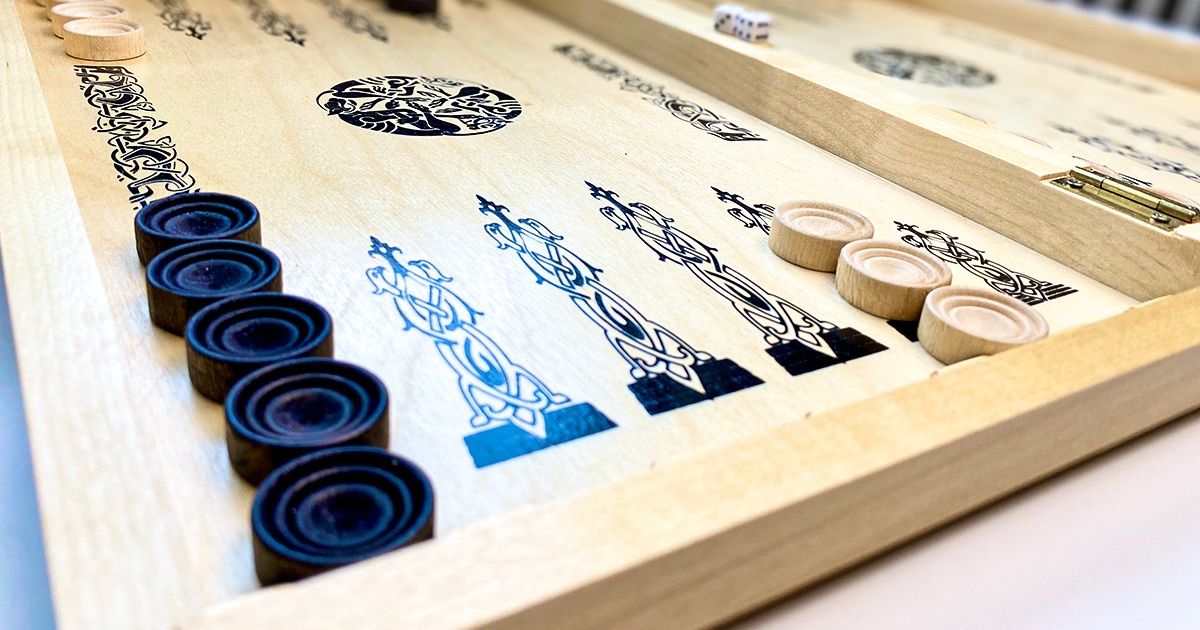
Backgammon is an ancient game. Its earliest ancestor, which is about 5 thousand years old, was found during the excavations of the Sumer civilization. It may seem that the rules of this game are very complicated, but they are not: the game is simple and won’t leave anyone indifferent.
5-Minute Crafts would like to offer our readers a chance to learn the rules of long backgammon and short backgammon.
Glossary
-
Bar — The raised ridge down the center of a backgammon board dividing the home board from the outer board.
-
Bearoff — The last stage of the game during which checkers are borne off according to a roll of the dice.
-
Block — 6 points occupied by checkers hindering the opponent’s progress.
-
Blot — A single checker (in short backgammon) sitting alone on a point where it is vulnerable to being hit.
-
Dice — 2 small cubes, each with faces marked with spots (pips (1)) representing the numbers 1 to 6.
-
Doubles — 2 thrown dice with identical numbers on their upper faces.
-
Home Board (Inner board) — It is the last quadrant your checkers move to before they are borne off.
-
Outer Board — The side of the board away from where the players bear off their checkers.
-
Point — One of the 24 narrow triangles, 12 on each side, of a backgammon board, where the players’ checkers sit.
-
Starting Position — The arrangement of checkers at the start of a game.
You will need
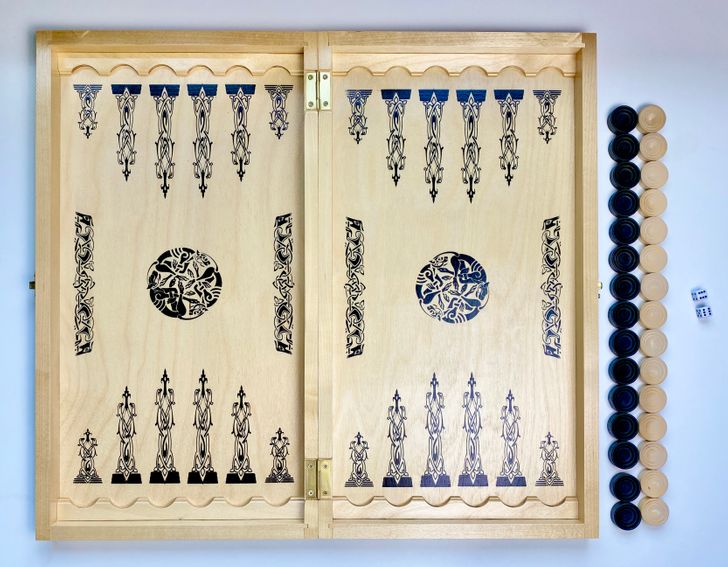
-
backgammon board
-
2 dice
-
checkers set (15 white checkers and 15 black checkers)
The object of the game
There are several types of backgammon. The most common are long and short backgammon. They have the same object: to bring all your checkers home and bear them off the board before your opponent does.
Long backgammon
Setup
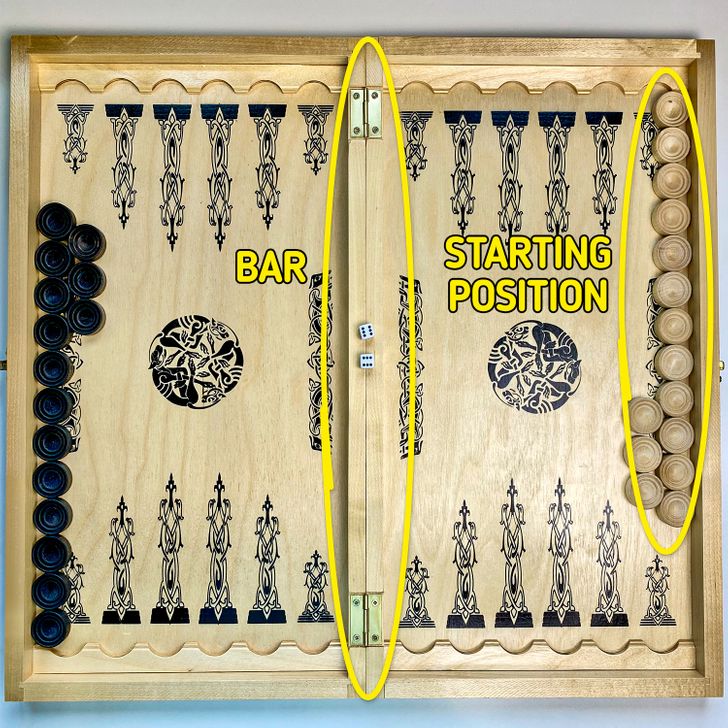
-
The number of players — 2.
-
Each player has 15 checkers.
-
See the starting position in the photo above. A player can move only one checker from the starting position.
-
Each player has to roll a die to decide who moves first. The player with the higher number moves first.
-
The players then take alternate turns.
-
The dice should be thrown on one side of the bar. If one die happens to go off the board or touch the edge, a player should throw them again.
Movement
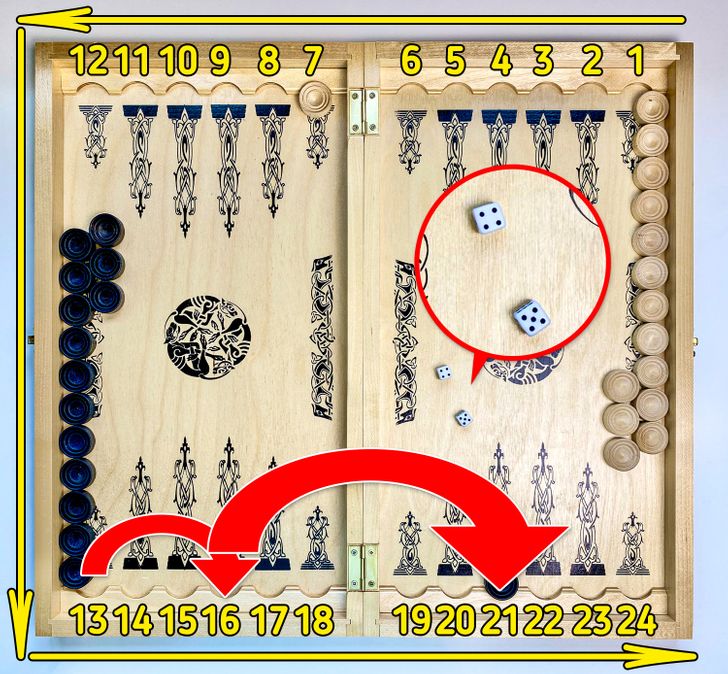
-
You have to move counterclockwise in long backgammon. You make the moves on the points (triangles) that are highlighted with numbers in the photo above.
-
If the point is occupied with the opponent’s checker, you can’t move it there.
-
To make a move, roll 2 dice. After that, a player must move their checkers according to the number shown on each die. For example, if you had 1 and 3, you must move one checker 1 point forward, and another or the same checker 3 points forward. You may make a move with the same checker, or with different ones. Don’t forget that you can move only one checker from the starting position.
-
If a player rolls 2 dice of the same number, called doubles, that player must play each die twice. For example, a roll of 2-2 allows you to make 4 moves of 2 spaces each. In this case, you can use 1, 2, 3, or 4 checkers.
-
If you rolled 6-6, 4-4, or 3-3 after the first roll, you can move 2 checkers from the starting position as the points to make all 4 moves with one checker will be occupied by the opponent’s checkers.
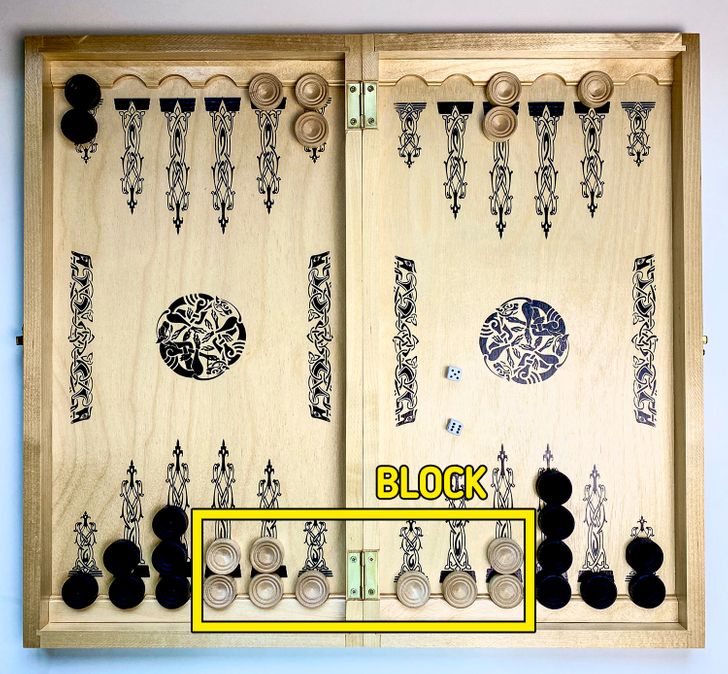
-
A block is 6 checkers in a row. You can build the block if there is at least one opponent’s checker before it.
-
A checker is considered to be “locked” if there are 6 opponent’s checkers in a row before it. This means you can’t make a move with it.
-
If your checkers can’t move because the necessary points are occupied with the opponent’s checkers, then you miss your move until you roll the necessary numbers.
-
You can land as many checkers as possible on one point.
-
If you can make only one move of 2 (according to one number on the dice), you are allowed to do it.
-
If you can’t make 2 moves, you must choose the longer move.
-
You can’t reject a move (the numbers you rolled on the dice) if this move is possible.
Bearing off
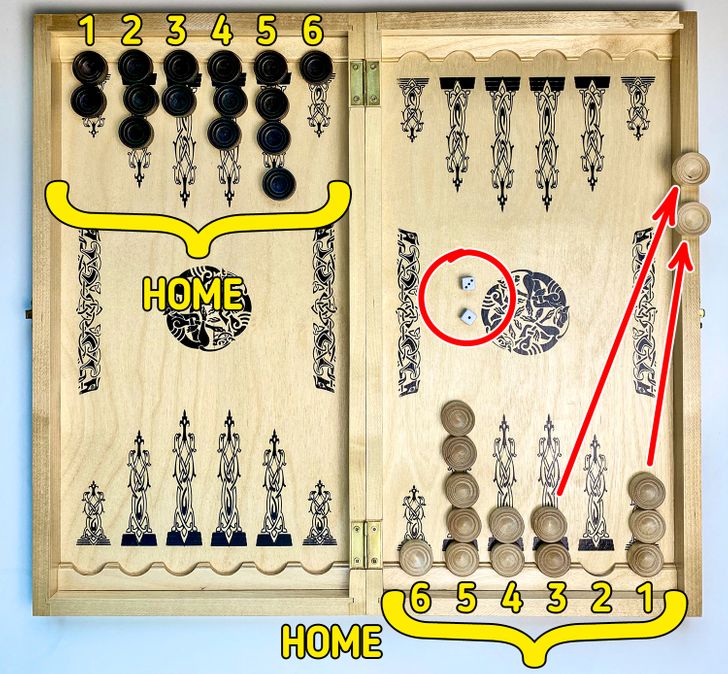
-
When all your checkers are on your home board (see the photo above), you may start removing them. This is called “bearing off.” You may bear off the checkers from the points in accordance with the numbers you rolled. For example, if you rolled 2 and 5, you may remove checkers from the points of 2 and 5.
-
You can bear off a checker according to the numbers on the dice or move it to the home board.
-
If all your checkers are on points lower than the number showing on a particular die, you must use that die to bear off one checker from the highest occupied point. For example, if you roll a 6 and a 5, but have no checkers on the 6- and 5-point, then the 6 and the 5 must be used to bear off the 2 checkers from the 4-point. If that is empty too, bear off checkers from 3-, 2- and 1-point.
-
The game ends when one player removes all checkers from the board.
Scoring
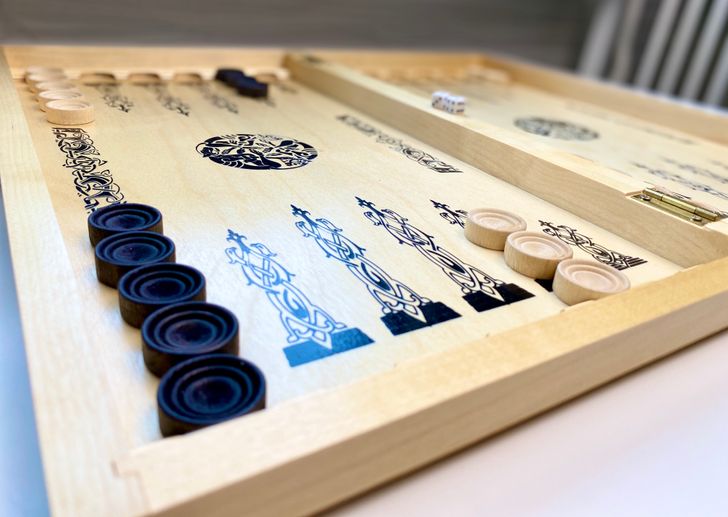
-
If the opponent manages to remove at least one checker before you end the game, you get 1 point.
-
If the opponent manages to remove no checkers before you end the game, you get 2 points.
-
A tie was impossible in backgammon for centuries. But recently the Backgammon Federation allowed it. It can happen when white finishes first, and the black bears off all their remaining checkers with the following move. In this case, each player gets 0.5 points.
How long and short backgammon differ from each other
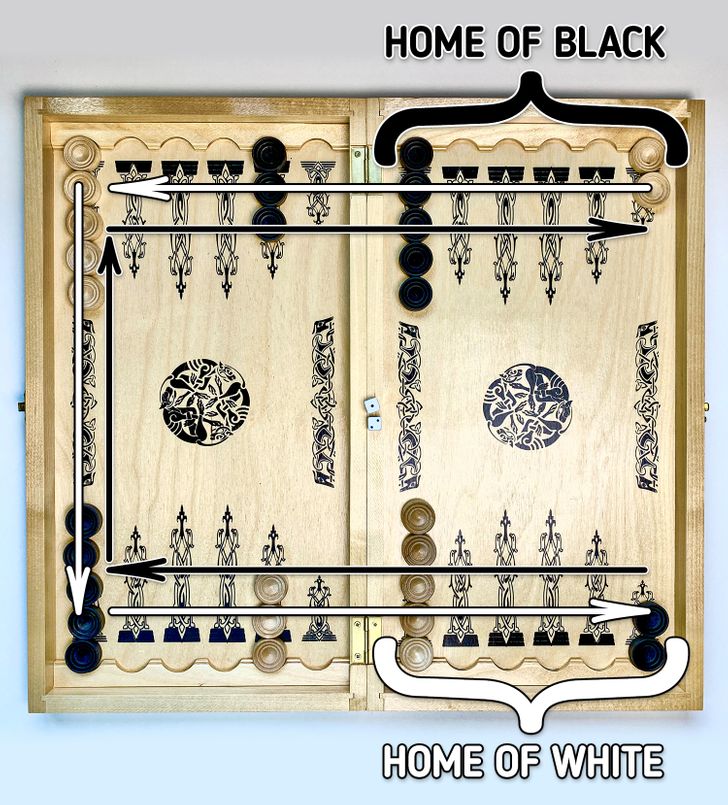
-
The starting position is different (see photo above).
-
The checkers of the players move toward each other. White moves counterclockwise, black moves clockwise.
-
You can hit the checkers. The point occupied by one checker is called “blot.” If your checker lands on the opposing blot, you hit it and the checker is placed on the bar. Your opponent must return it to the starting position with the next move. Checkers may not enter a point occupied by 2 or more opposing checkers. When all the checkers from the bar enter the board, the opponent can move it as usual.
-
You can’t “lock” checkers in short backgammon.